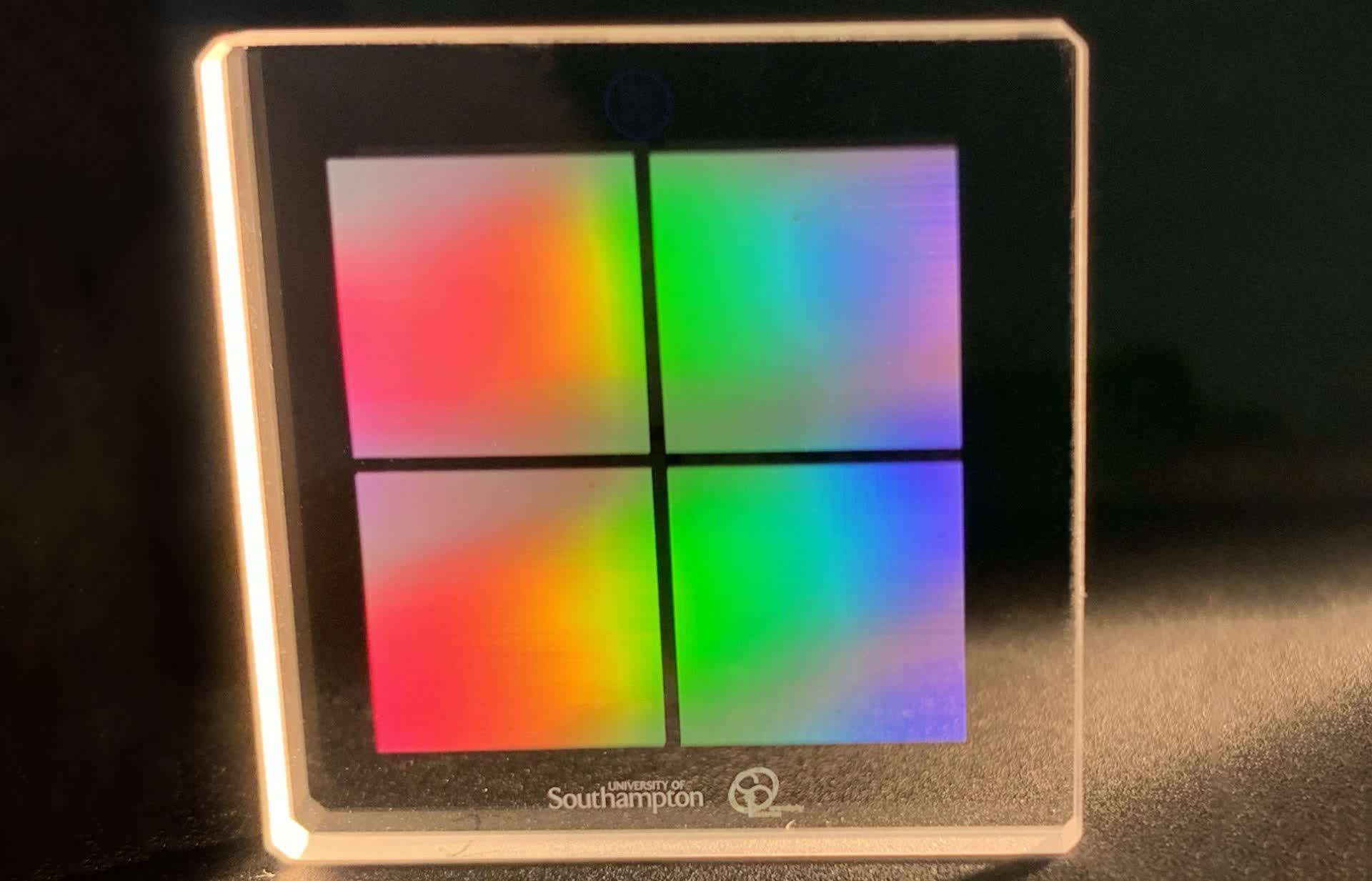In brief: Researchers from the University of Southampton in the UK have been working on a technique to store massive amount of data on CD-sized glass discs for over a decade. The current iteration of their tech is more than 10,000 times denser than Blu-ray optical storage.
As Optica explains, Yuhao Lei and Peter G. Kazansky from the University of Southampton have developed a method that uses an energy-efficient laser to create high-density nanostructures in silica glass across two optical dimensions and three spatial dimensions.
According to its creators, the technique can write at speeds of 1,000,000 voxels per second, which is equivalent to recording about 230 kilobytes of data (more than 100 pages of text) per second.

Humanity is generating ever-larger datasets, and while cloud-based storage systems are making do for now, they're really just temporary solutions based on legacy storage technology. For truly longer-term data storage, something much more robust is needed.
Glass is one viable solution, but it's not the only medium being explored. In addition to its own work with glass, Microsoft has also been experimenting with the viability of using DNA as a long-term storage medium. Twist Bioscience, the research facility Microsoft teamed with in 2016, said at the time that a single gram of DNA can store nearly one trillion gigabytes (sometimes referred to as a zettabyte) of digital data with a known shelf life of several thousand years.
Researchers in the UK are currently working to increase the writing speed of their laser / glass method to make it viable outside of the lab. They'll also need a faster way to read data before it can become a practical storage solution.
Image courtesy Opt Lasers
